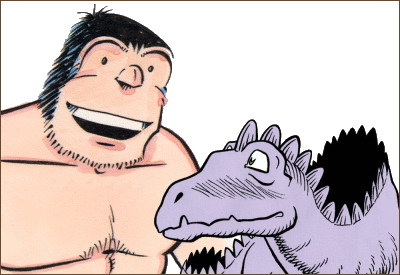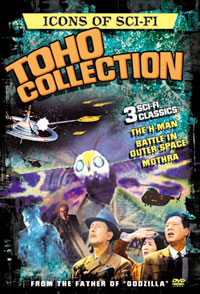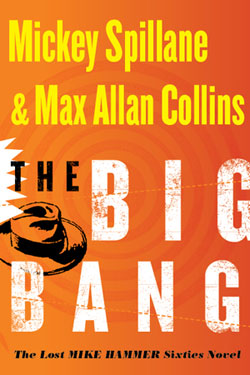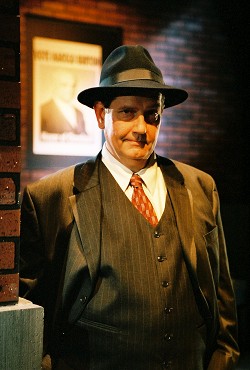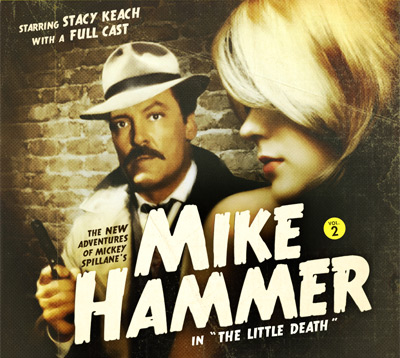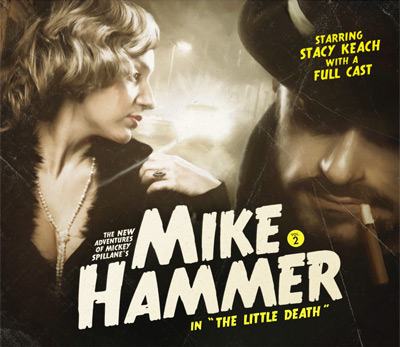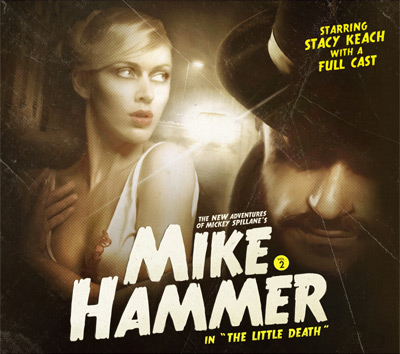As I write this (Sunday night), I am in a hotel in suburban Chicago. Tomorrow I shadow sportscaster Mike North as the first step in what I hope will be an exciting film project.
Just in is a nice review of ANTIQUES FLEE MARKET from Craig Clarke, who hasn’t always been a fan of Barb and me working together, but definitely seems to be coming around.
Barb and I have spent the Friday through late Sunday afternoon at Second City in Chicago, for the famous improv theater’s 50th anniversary celebration. Many huge comedy stars were present (Steve Carrell and Steven Colbert the biggest draws), and scores of familiar comedy faces from legends like Shelly Berman and Robert Kline to SNL vets like Tim Meadows and Rachel Dratch. Barb and I went to Second City regularly in the ’70s and ’80s (until hotel and parking costs drove us to the suburbs for our Chicago shopping getaways) and followed many of those who entertained us on the famous Second City mainstage to SNL and other show biz glory — among them, Tim Kazurinsky, Mary Gross, George Wendt, and many more. Of that company, Larry Coven became a friend and appeared in two of my indie films (MOMMY’S DAY and REAL TIME) and brought the legendary Del Close into MOMMY’S DAY for a cameo role (making me Del’s final film director). Del was a big fan of the Nate Heller books — he would come to my Chicago signings — and that’s an honor I cherish.
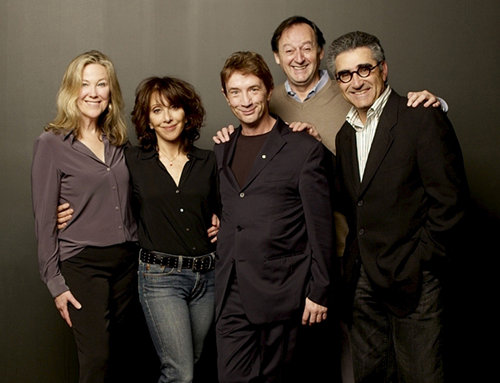
Photo courtesy Metromix Chicago
But the real reason Barb and I were at the 50th anniversary event was the one-time only reunion of the cast of SCTV. They did two shows Friday night (Dec. 11) and did a panel about the show on the following morning. I guess I’ve never revealed my obsession with SCTV here. It’s an enthusiasm I share with Barb, but also my longtime comics partner, artist Terry Beatty. SCTV debuted in 1977, right around the time I got my first home video machine, and I taped every show. I have rarities few people even know of (a Cleveland special, a Dave Thomas time travel mini-movie, a Bobby Bittman bio). To me, SCTV was the comedy Beatles…and their reunion was the Beatles reunion that never happened.
The cost was enormous (don’t ask). It was a benefit for Second City performers who need financial and health assistance, and the “cheap seats” ($175 each) were gone before I even heard about the event. Frankly, we could not afford to go. But we couldn’t afford not to, as a used car salesman would say.
Present were Flaherty, Ramis (who’d been only on the first two seasons though a guest later on), Andrea Martin, Catherine O’Hara, Martin Short, Eugene Levy and Dave Thomas “as the Beaver.”
The reunion Friday night was comedy nirvana. I got to speak briefly with both Joe Flaherty and Harold Ramis before the show, and both were apologetic before the performance (Ramis said: “Good luck with the show tonight”). In truth, they were under-rehearsed (on the panel, Catherine O’Hara revealed that they had put it together via e-mail, with one rough run-through Friday afternoon). They used scripts at times (worked into the pieces — i.e., the newscast sketch), and in the first scene they fumbled any number of times. But as the love from the audience washed over them — and as each amazed and proud cast member watched the geniuses around them shine, they found the zone. It was a mix of Second City standards (some of which had given birth to SCTV regulars, like Ed Grimley, Pirini Scleroso and Edith Prickely) and routines from SCTV itself (Dr. Cheryl Kinsey’s instructions on how to fake an orgasm, Count Floyd’s 3-D glasses pitch), with occasional new stuff — most impressive, an extended Sammy Maudlin show mostly about Ramis’ Moe Green replacing the late William B. William (John Candy), but featuring incredible dance gymnastics from Andrea Martin, who did a flat-out amazing medley of “great” Canadian pop tunes with Levy’s Bobby Bittman. I could not have been happier opening a fat envelope stuffed with royalty checks (which I could use after springing for the tickets). Time Out Chicago also had a great review of the reunion.
Their panel Saturday morning was as good as the reunion show — they shared backstage stories, and were funny and entertaining, particularly when Levy goaded Thomas into defending the notorious “Vikings and Beekeepers” sketch. They spoke movingly about Candy. I got to ask a question from the audience, which was about how the famous folk they’d impersonated had reacted, and Thomas told of Richard Harris being furious, Martin of Streisand being oblivious, and Short of Jerry Lewis being gracious. Just wonderful.
Over the course of the weekend, I had the honor of speaking to Ramis several times, and Levy and Thomas, as well. I spoke to Short briefly and he was gracious, and Flaherty, who is a wonderful guy. The two gifted female members of the cast made themselves scarce, and were the only autographs I did not snag for a DVD cover. Over the weekend I managed to get signatures from other SCTV regulars — Tony Rosato, Robin Duke, and John Hemphill — as well. Rosato has been in ill health but looked fine, though he did not perform. Duke led a troupe of Toronto alumni (“Women Fully Clothed”) that was a knockout — Duke is one of the funniest women who ever walked the planet.
I was a real fanboy all weekend — really disgraceful — snagging autographs whenever I could. Everybody was gracious, with one exception — Steven Colbert blew me off. There was no one around and it would have taken him maybe three seconds. Very disappointing. Others were generous, from Belushi to Berman, from Colin Mockrie to David Koechner. Edie McClurg (Hermit Hattie of Pee-Wee’s Playhouse!) became our immediate new best friend. Jeff Garlin was such a sweetheart of a guy, you could understand why Larry David wants to hang with him.
Speaking of Garlin, of the non-SCTV events we went to perhaps the most amazing was his Saturday afternoon “Combo Platter.” He was joined by Fred Willard and Chicago comic David Pasquesi in about 90 minutes of spontaneous stand-up. Garlin did nothing prepared — he worked off the audience, gave stuff away that he’d gathered at the event (hotel cookies, a Second City Christmas ornament, some old DVDs his parents gave him) and got half an hour of genuinely hilarious stuff out of it. When the others came on, they did a sort of pass the baton routine, where they started off with an audience suggestion (“Tiger Woods!”) and kept handing off to each other as they explored golf, marriage, cheating, sports movies, and on and on. Some of it may have tapped into bits the artists had done — Pasquesi is a sharp, smooth pro — but mostly it was off-the-cuff. Willard is a genuis of insanity, and both he and Pasquesi would get Garlin laughing in a distinctive wheezing high-pitched way that threatened to kill their host on the spot. I have liked Garlin on CURB YOUR ENTHUSIASM, and have both his DVDs (the film I WANT SOMEONE TO EAT CHEESE WITH and the stand-up YOUNG AND HANDSOME). But I had no idea he was this casually brilliant average joe comedian.
Among the Second City alums was Tim Kazurinsky, who appears on THE NEW ADVENTURES OF MIKE HAMMER VOL. 2: THE LITTLE DEATH. Tim, who rivals Garlin in sheer niceness, said he loved THE LITTLE DEATH and thought it came off great. So do I. So will you (Amazon has it in stock now — talk about stocking stuffer!).
M.A.C.
















